Tourism
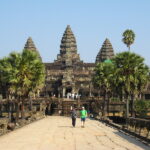
The Royal Government of Cambodia has acknowledged the potential of the tourism industry as a source of Cambodia’s socio-economy growth, including job creation and poverty reduction. Tourism has been considered one of Cambodia’s key economic pillars, both international and domestic. In the early 2000s, the ref='https://opendevelopmentcambodia.net/topics/tourism/ ' class='cambodia-color'>...
Solid waste
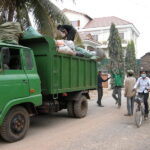
Trash collection in Siem Reap province, Cambodia. Photo taken by David Villa, taken on 12 January 2008. Licensed under CC BY 4.0 DEED.Solid waste is defined as “used things, materials, or products that remain or are generated from human daily activities and livelihood and do ref='https://opendevelopmentcambodia.net/topics/solid-waste/ ' class='cambodia-color'>...
Agricultural commodities, processing and products
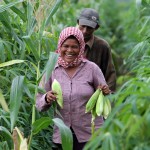
Farmers harvest corn from their farms, Cambodia. Photo by World Bank/Chhor Sokunthea, taken on 17 July 2013. Licensed under CC BY-NC-ND 2.0Key agricultural commodities and products include rice, rubber, corn (maize), vegetables and fruit, and cassava (tapioca). More than 90 percent of Cambodia’s agricultural exports ref='https://opendevelopmentcambodia.net/topics/agricultural-commodities-processing-and-products/ ' class='cambodia-color'>...
Disasters and emergency response
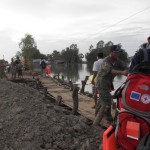
Cambodia flood, 2011. Photo by European Commission, taken on 11 October 2011. Licensed under CC BY 2.0Storms, flooding and lightning strikes are the major causes of death and property damage from natural disasters in Cambodia, while drought causes severe hardship, especially for farmers. In a ref='https://opendevelopmentcambodia.net/topics/disasters-and-emergency-response/ ' class='cambodia-color'>...
Forest policy and administration
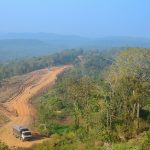
Logging truck in Mondulkiri protected forest , Cambodia. Photo by Global Water Forum, taken on 23 February 2014. Licensed under CC BY-NC-SA 2.0Cambodia is deeply concerned about deforestation. While the country seeks fast economic development, forests represent a tremendous national treasure. In order to help ref='https://opendevelopmentcambodia.net/topics/forest-policy-and-administration/ ' class='cambodia-color'>...
Investment policy and regulations
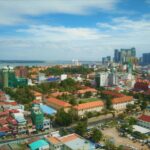
Cambodia’s economy has experienced an impressive performance, reflected in its rapid economic growth and significant poverty reduction. Part of this is the result of the relative openness of Cambodia towards foreign investors. Domestic investment has also been growing, although at a lower rate than other ref='https://opendevelopmentcambodia.net/topics/investment-policy-and-regulation/ ' class='cambodia-color'>...
Science and technology education and promotion

Cambodia recognizes the important role of science and technology in the 21st century and aims to transform and integrate technology into its human resources through the education sector. Various policies and strategies are implemented to achieve the goal such as Policy guidelines for New Generation ref='https://opendevelopmentcambodia.net/topics/science-and-technology-education-and-promotion/ ' class='cambodia-color'>...
Aid and development
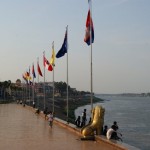
Following the Paris Peace Accords signed in October 1991, Cambodia has received a significant amount of global support for its development and post-conflict work. In 2014, 30 – 40 percent of the country’s national budget is funded through development assistance, placing Cambodia among the most ref='https://opendevelopmentcambodia.net/topics/aid-and-development/ ' class='cambodia-color'>...
Renewable energy production
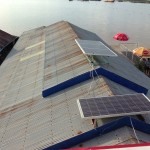
Renewable sources of energy include biofuels, solar, wind, tidal and geothermal energy. Fossil fuels such as petroleum or coal are not renewable. ref='https://opendevelopmentcambodia.net/topics/renewable-energy-production/ ' class='cambodia-color'>...
Electricity production
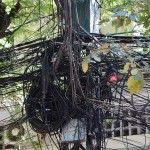
In Cambodia, electricity demands have been forecast to grow at 17.9 percent annually from 2012 to 2020.409 Distribution of electricity around the country has been a challenge: according to UN data, 79 percent of people live in rural areas,410 and the entire national population had grown ref='https://opendevelopmentcambodia.net/topics/electricity-production/ ' class='cambodia-color'>...
Court monitoring
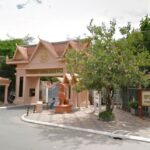
Respect for strong values is the key to citizens’ trust in their courts.445 The international values recognized for judges are independence and impartiality, integrity, equality of treatment, diligence and competence. A judge cannot both decide a case and have a personal interest in its resolution. ref='https://opendevelopmentcambodia.net/topics/court-monitoring/ ' class='cambodia-color'>...
Public land lease
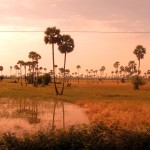
Public land leases are grants of state lands to private entities in the form of a contractual rental agreement. These leases often take the form of land concessions, in particular economic land concessions. They are often associated with land conflicts and disputes. ref='https://opendevelopmentcambodia.net/topics/public-land-leases/ ' class='cambodia-color'>...
Decentralization and deconcentration
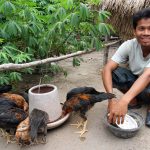
Decentralization and deconcentration are seen as “internally driven” reforms491, where the national government gradually delegates power, involving either administration or finance, to local governments to administer in their locality.27-year-old Sun Sovath supports his family by raising chickens, in Kampong Thom, Cambodia. Photo by World Bank Photo ref='https://opendevelopmentcambodia.net/topics/decentralization-and-deconcentration/ ' class='cambodia-color'>...
Garments and textiles
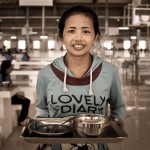
The garment industry has rooted in Cambodia earlier than the footwear industry. As a result of trade privileges given by the U.S. and EU, both industries have blossomed. As of 2013, the garment and footwear industries were accountable for about 80 percent of Cambodia’s total ref='https://opendevelopmentcambodia.net/topics/garments-and-textiles/ ' class='cambodia-color'>...
Ministry of Foreign Affairs and International Cooperation
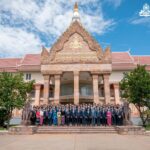
Ministry of Foreign Affairs and International Cooperation. Photo taken from the ministry’s Facebook Page, taken on 23 August 2023.EstablishmentUnder Royal Decree No. NS/RKM/0196/10, the Ministry of Foreign Affairs and International Cooperation (MFAIC) was formally established on 24 January 1996. The ministry has a total of ref='https://opendevelopmentcambodia.net/topics/ministry-of-foreign-affairs-and-international-cooperation/ ' class='cambodia-color'>...
Forests and forestry

Cambodia’s forests have seen a significant reduction of total forest and dense forest cover in recent years, the growth of plantations, particularly rubber, and an ongoing problem with illegal logging. ref='https://opendevelopmentcambodia.net/topics/forests-and-forestry/ ' class='cambodia-color'>...
Communal land

Though there are multiple forms of communal property, the rights associated with indigenous communal property are subject to significant legal and socio-economic issues. Indigenous communities are culturally very different from the rest of Cambodia, and the law provides them with the opportunity to obtain collective ref='https://opendevelopmentcambodia.net/topics/communal-land/ ' class='cambodia-color'>...
Small and medium enterprises SME
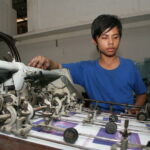
Small and medium enterprises (SME) have long been considered a vital driver to economic growth for developing economies. SMEs stimulate job creation throughout the country. Migration of employment to neighboring countries and the unemployment rate has significantly decreased due to a rising number of SMEs, ref='https://opendevelopmentcambodia.net/topics/small-and-medium-enterprises-sme/ ' class='cambodia-color'>...
Energy policy and administration
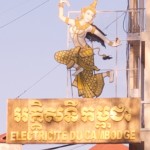
Electricite du Cambodge (EdC). Photo by bmeabroad, taken on 10 November 2011. Licensed under CC BY-NC-SA 2.0.Low electrification rates and over-dependence on fossil fuel imports have contributed to Cambodia ranking 120 out of 124 nations in the new World Economic Forum’s Global Energy Architecture Performance Index ref='https://opendevelopmentcambodia.net/topics/energy-policy-and-administration/ ' class='cambodia-color'>...
Drought
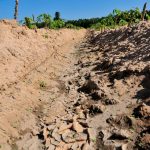
Cassava farm in Siem Reap, Cambodia. Photo by CIAT, taken on 09 December 2014. Licensed under CC BY-NC-SA 2.0The drought that Cambodia experiences is a shortage of water that is typically caused by:late onset of the rainy season (which normally occurs from May/June to October and ref='https://opendevelopmentcambodia.net/topics/drought/ ' class='cambodia-color'>...



